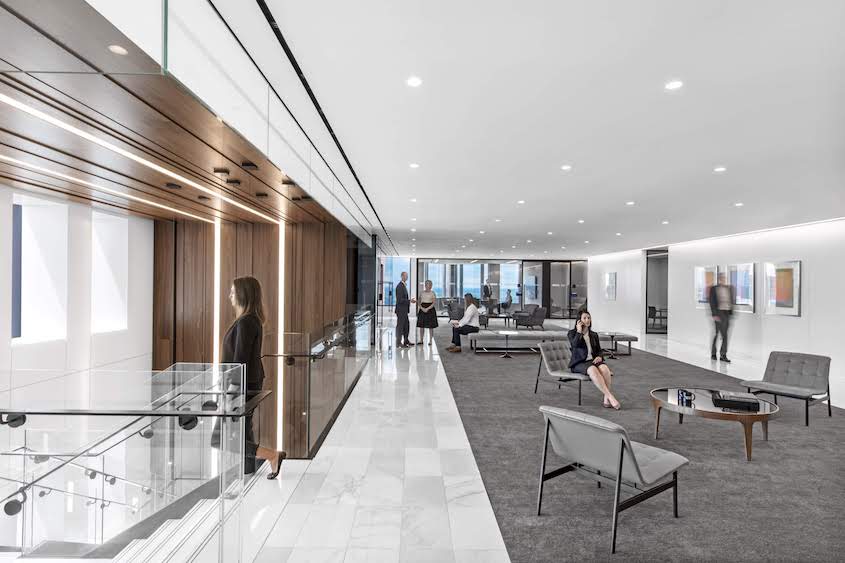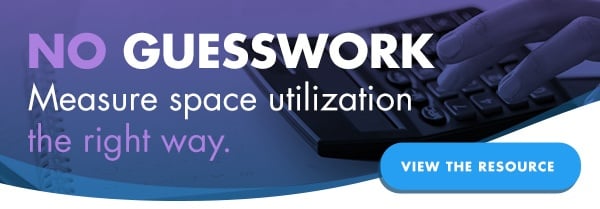Finding The Ideal Space Utilization For A Growing Law Firm


Identifying ideal space utilization can be tricky, especially when your organization is in the midst of doubling in size following a merger or acquisition.
This is the dilemma law firm Troutman Sanders faces as it merges with another regional giant, Pepper Hamilton, in April. The new firm, known as “Troutman Pepper,” will have 1,100 attorneys in 23 offices across the country, including a presence in eight of the 10 largest U.S. markets.
For Joseph Geierman, the firm’s director of real estate and facilities, the merger represents another opportunity to design its law offices for greater flexibility and a better workplace experience.
Geierman was featured as a guest on the Workplace Innovator Podcast last May and took some time to share some updates with us more recently.
Here’s what he had to say about finding ideal space utilization to optimize costs while creating an attractive environment for attorneys.
Tell us more about Troutman Sanders (soon to be Troutman Pepper) and what type of culture you’re trying to create there. How does your workplace design support that?
I have worked to make Troutman Sanders a place that people want to come to. No one joins a law firm because of the office, but some people might not join a firm because of the office environment. We want to be able to compete with other law firms and other types of businesses, especially in hot markets like San Francisco and New York.
So we’re trying to create a workplace that people want to come to and one that conducive to collaboration.
We think a lot about flexibility when we make real estate decisions; for instance:
How will this space work for us long-term?
How can we use the same space for different purposes?
In our Atlanta office, we have a reception area with a large multipurpose room and a skyfall that opens up so it can be two rooms, or one huge event space for after-hours client parties. We can use it for 20 people, 100 people, or even more. We’ve done something similar in Raleigh, but included a multipurpose break area, and one side of the multipurpose room opens up to a reception area. When it’s all open, you’re basically walking through a fourth of the building floor. It feels kind of loungy and very nice.

In your Atlanta office, you moved the same number of people into a smaller space in 2018. What did you do to maximize space utilization without making the area feel smaller?
Our new office has 100,000 less square feet than our historical footprint. One thing we did was use single size attorney offices rather than large partner and smaller associate offices. That gave us more flexibility to place people in new spaces, and we could fit more attorneys. We had done it in a smaller office first and our managing partner bought into the idea, so he ended up taking a nondescript office. He led by example, so it’s hard for people to complain. They also got huge upgrades too in terms of furniture. We ditched the old desks and credenzas and moved to work walls from Geiger, with adjustable-height workstations. They’re more ergonomic, and it’s a more comfortable setting for people to work in. We also moved to glass office fronts, which was a big change. Some pushed back on that; they wanted privacy. But again, our managing partner led by example. The glass office fronts lend to more collaboration and approachability.

How much smaller are these single-size offices compared to what attorneys are used to using?
One of the most significant things that we have seen in the evolution over the generations is a huge reduction in square foot per attorney, by almost 50%. We’re seeing dramatic increases in the ratios of attorneys to secretaries. We’ve heard that a five-to-one ratio is becoming more standard. People are pushing six-to-one or seven-to-one ratios, depending on their practice and their culture. Office sizes are continuing to range from 125 to 225 square feet.
With big changes like these, people tend to overestimate what they’re going to lose and underestimate what they gain. Did you add any other amenities that helped to ease the transition?
Our break areas previously were small. In the new build-out, they are all against the window so they’re nicer to go to. We also added a better coffee grinder, Coke Freestyle machines, and a grab-and-go market concept where people can scan food and pay for added convenience. Attorneys and staff work late and work weekends, so this was a better option for them. We’re really pleased with how successful this move was. It’s a better space. We also did a lot of change management, showing people what the new space would be like, doing furniture tours and giving a lot of communication about what was happening so they’d know what to expect. At the very least, they felt there was more certainty.
What emerging trends are you most excited about when it comes to space utilization and office design, especially for law firms?
We talked about the universal reduced office sizes, the increased collaboration shifts to resource centers in lieu of separate areas for admin workstations and support, an emphasis on visual transparency and changing support ratios. Another big trend right now is introducing a hospitality factor to the design of offices.
I believe we’ll see a continued trend towards reduced office sizes, a shift towards administrative resource instead of individual staff workstations, and an emphasis on visual transparency and changing support ratios. Another big trend right now is introducing a hospitality factor to the design of offices.
For more inspiration on how to achieve the right space utilization for your organization, check out our newest resource.
